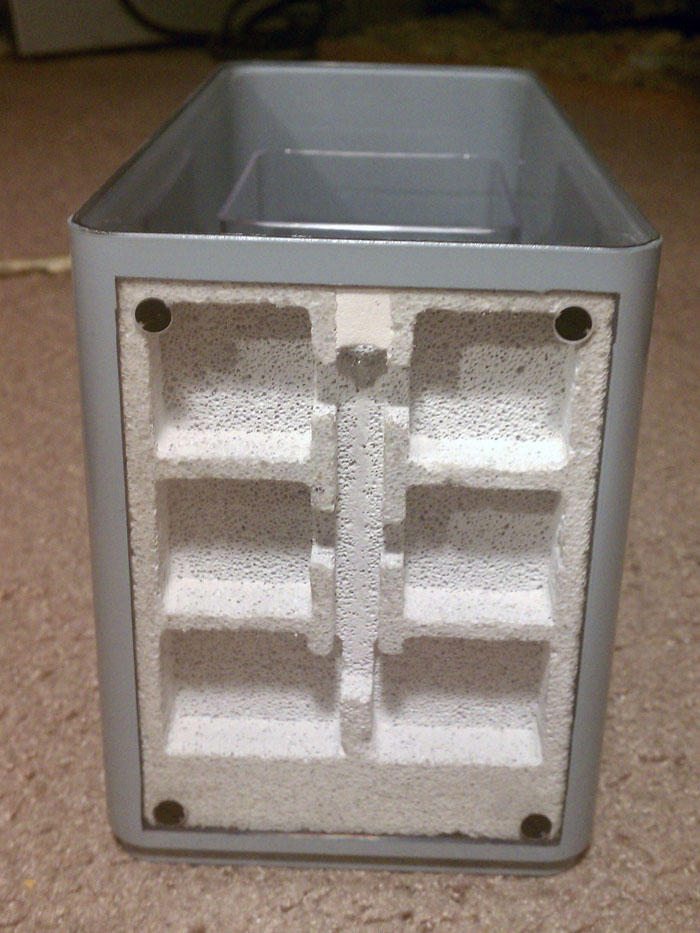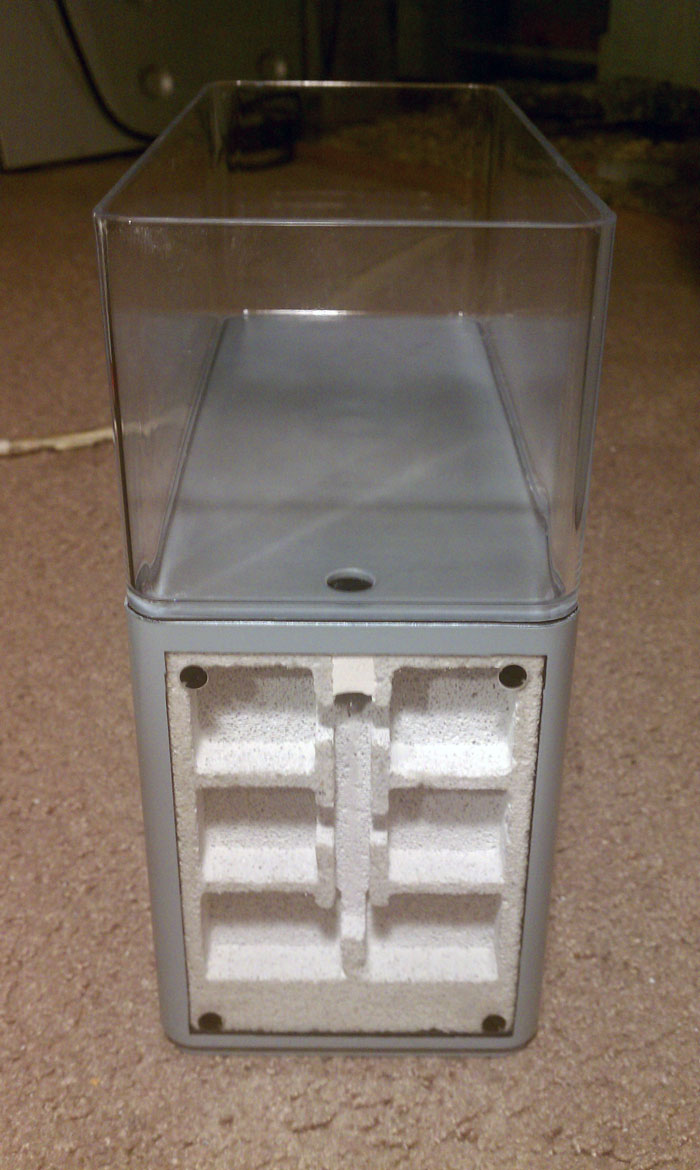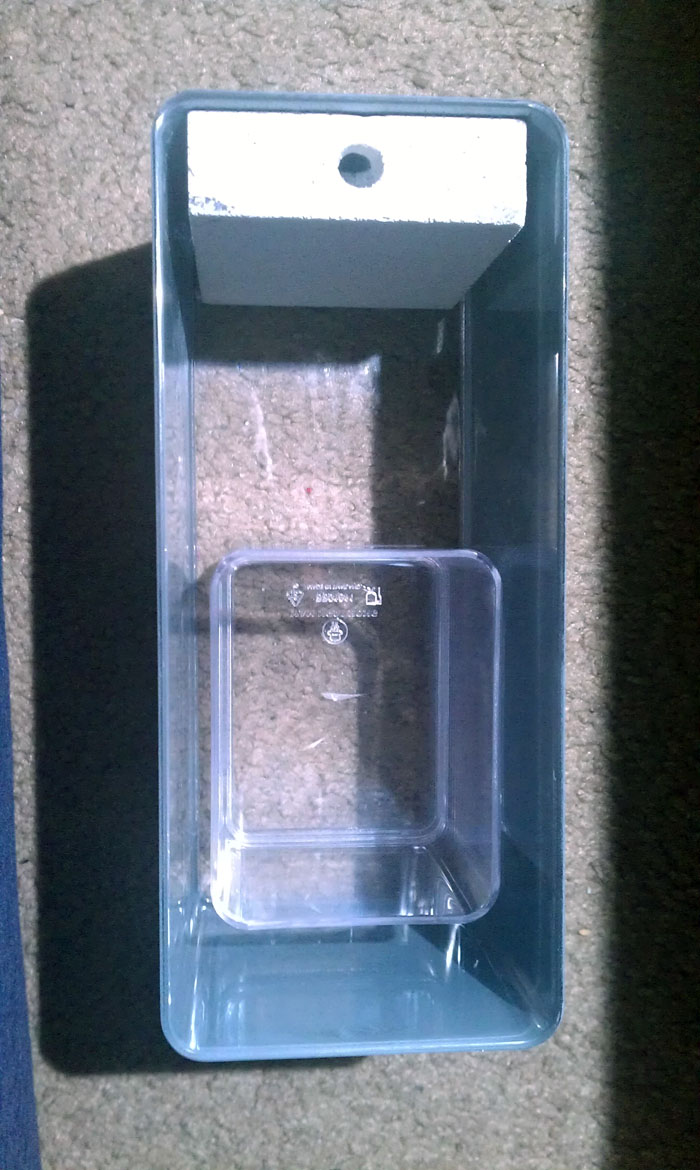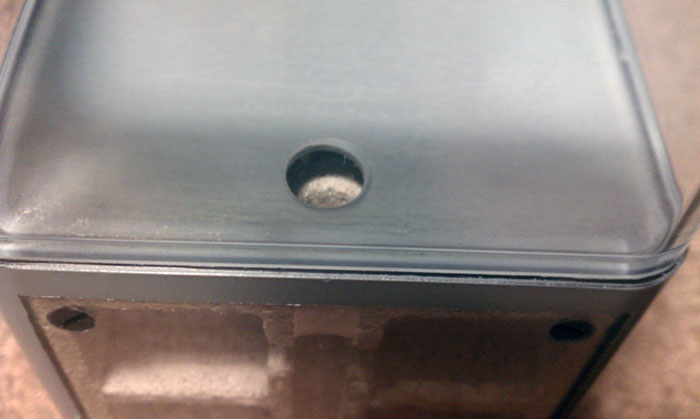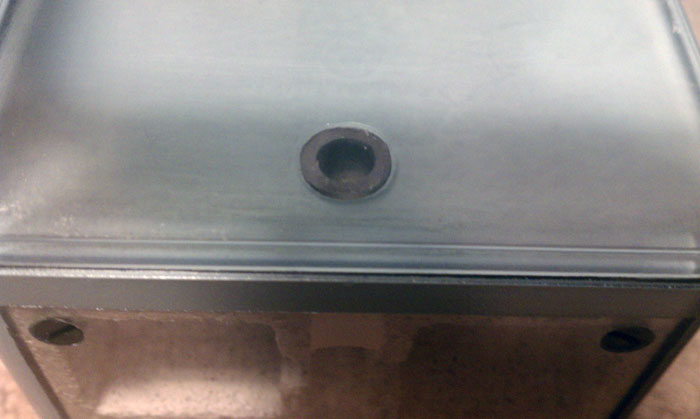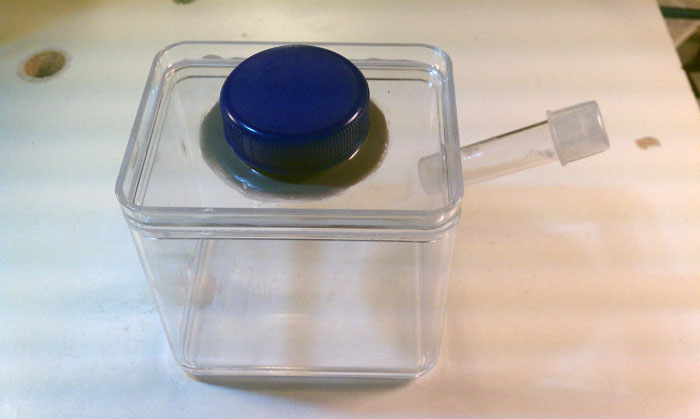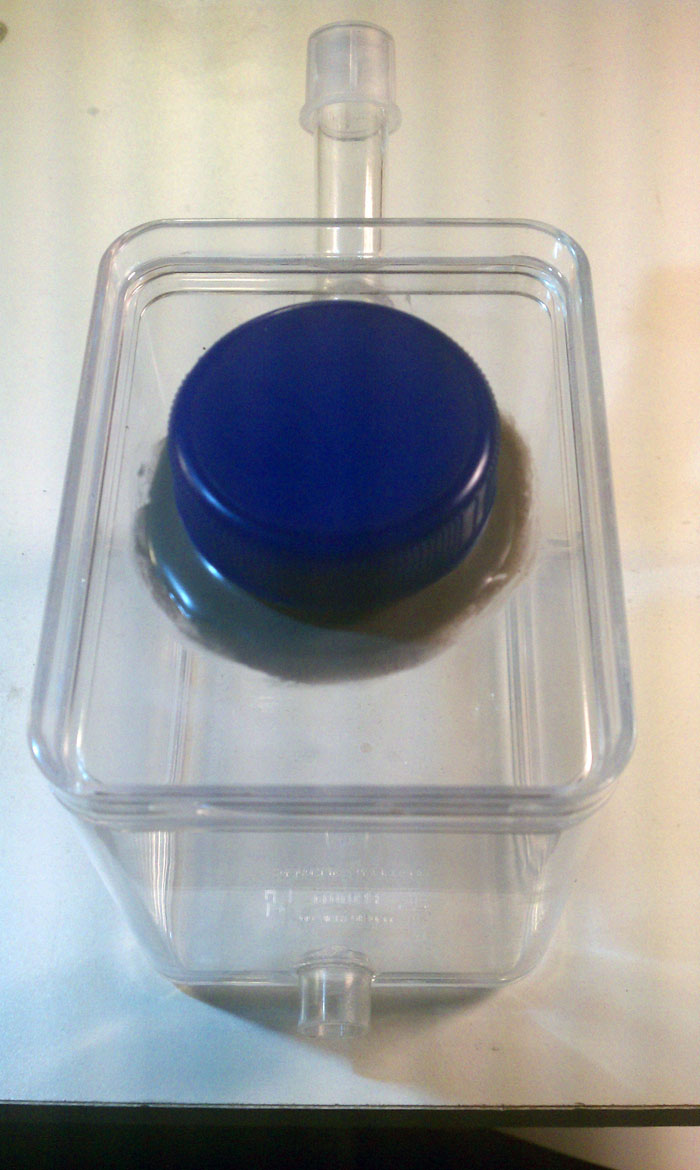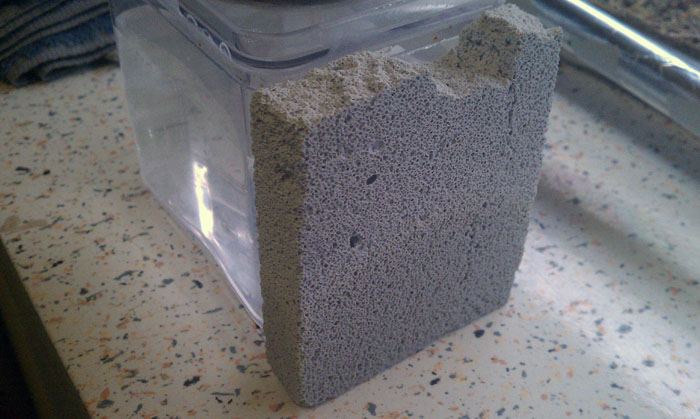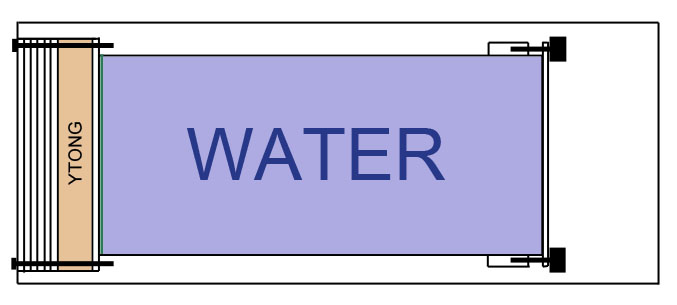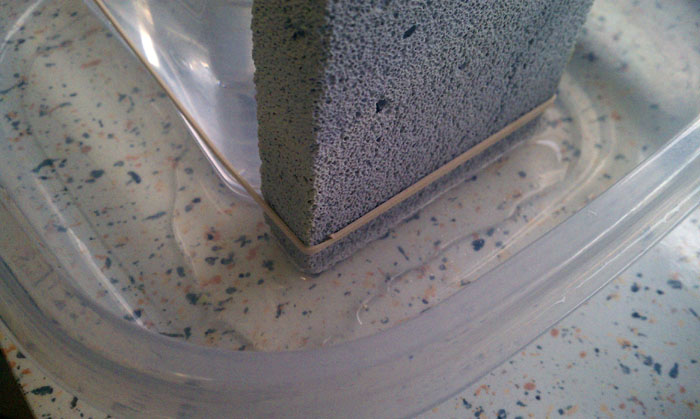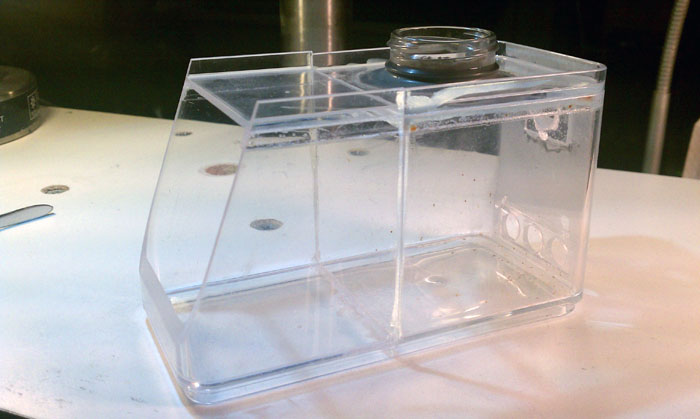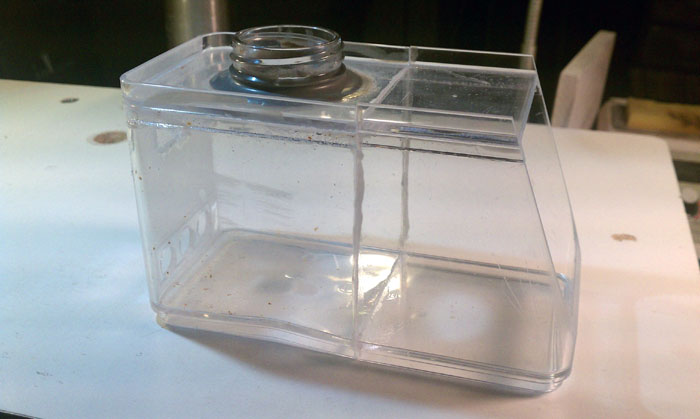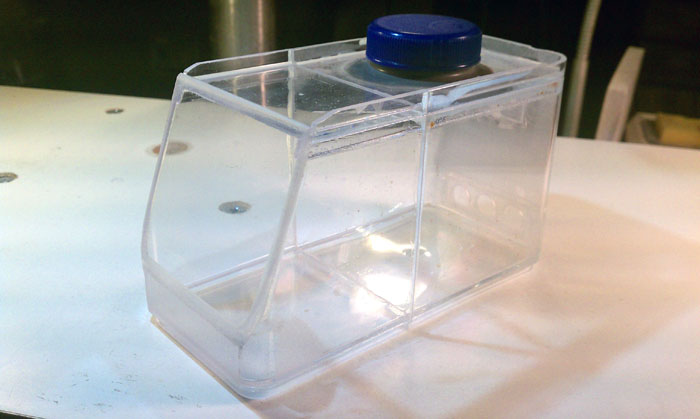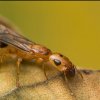Ok, so I gave my tank a little test, and it pretty much failed. Having a hose a few inches long coming out the side almost horizontally will never allow any water to come out as long as the container is sealed. If the hose came out the bottom, there would be enough gravity pulling the water down to allow it to flow out and air to seep in. Since I have no plan to have a hose coming out of the bottom of the water tank, I had to think of some other way to solve this problem. Getting rid of the hose all together would most likely do the job.
My plan now is to drill more holes along the bottom of the tank, and actually mount the piece of Ytong or Hydrostone directly to it, covering over the holes. This would make it even more like the common test tube setup. I first drilled the holes and filled the tank just to see how well the water would drain without any material used for resistance; the water slowly and steadily drained out with a steady flow of air bubbles going in. I cut a small piece of Ytong, and a small piece of Hydrostone down to size and glued them over the holes. I decided to test both out, one on each side at the same time which was a bad idea because it kind of messed up the vacuum inside the tank. I ended up having to duct tape over each side as I tested the other. I decided to attach the Ytong with JB Weld, and I used silicone for the Hydrostone. I'm not sure if JB Weld is safe to use, especially coming in contact with the ants' drinking water, so I most likely will be using silicone unless this test shows that silicone just isn't going to hold good enough. I do know that silicone works great on glass, but does not stick well at all on plastic, so we'll see. I also sanded down the plastic making it very rough before applying the silicone too, so we'll see if this makes any difference.
Here's a picture of the tank with the Ytong being tested out.
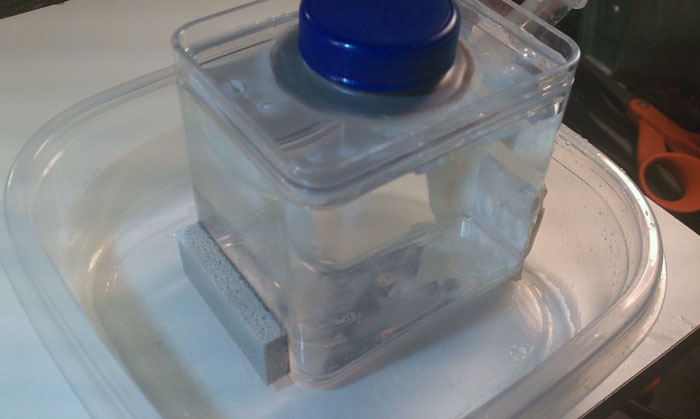
So far it seems to be working well, but I do notice that once the Ytong is saturated and the water has nowhere else to go, it does starts to drip down to the bottom a little bit. This probably won't be a problem considering how fast the water evaporates from Ytong. Once this is up against the larger Ytong nest backing, it will never be able to completely saturate all of it, so there shouldn't be anything dripping onto the bottom of the formicarium. I'm going to leave this overnight without anything for the water to wick into, and see how much of it drips down.
While working on the water tank, I have also been testing out some pieces of Ytong of different thicknesses, to see how far up the water would wick while it sits with about 1/2 inch of it submerged. Out in the open air with about 40 to 60 percent humidity in my apartment, the water wicked up about 1.5 inches on all of the pieces regardless of their thickness. This amount will make the ideal moisture gradient for the nest size of most of these formicaria I'm designing. I am now going to test this out inside something that will raise the humidity quite a bit to see how far up that allows the water to wick. I'm assuming it will be the same, with just a slower rate of wicking and evaporation, since it's really just gravity verses the power of capillary action. I should have some results in the morning.
